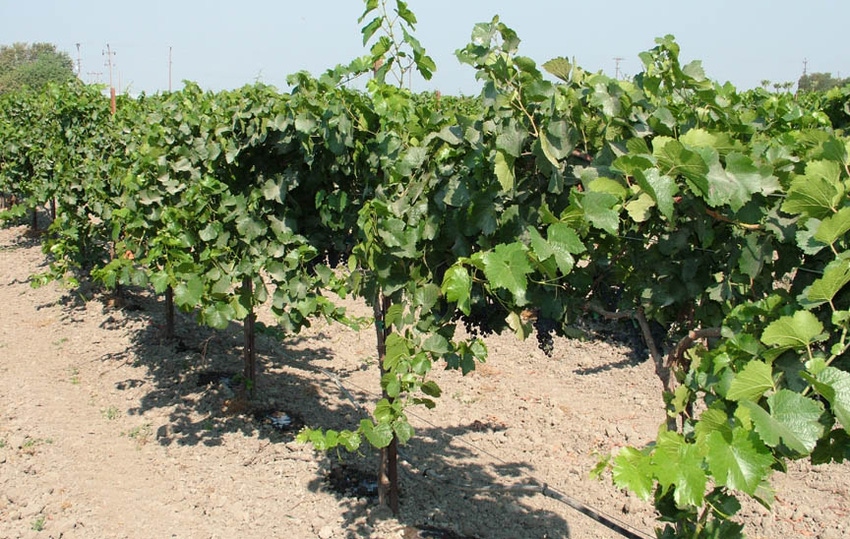
Fresno County grower Greg Markarian’s raisin grapes are continuing to mature rapidly. With the vines bearing a fair number of clusters and good-size berries, he expects production this year to be up some from last year’s level.
“Right now it doesn’t appear to be a really large crop, but I think it’s going to be a good one,” he says.
In addition to 110 acres of Thompson seedless and 10 acres of Zante currants, Markarian Farms also produces wine grapes and almonds.
Both his Thompson seedless and Zante are maturing about 10 to 14 days ahead of normal. The Zante berries began to color and sugar up in the third week of June. He started seeing the first signs of veraison in his Thompson seedless July 1.
As a result, he skipped treating the Thompson seedless with ethephon this year. He’s done that veraison treatment the previous five seasons to accelerate fruit maturation. University of California researchers report that in vineyard trials, ethephon has pushed grape maturity ahead by about 1 degree Brix, the equivalent of one week.
“With the crop advancing so well on its own, I figured this would be a good year to give the vines a break,” Markarian explains.
He’s faced relatively little disease pressure this season. However, the heat wave at the beginning of July, when temperatures pushed past the 110-degree mark, triggered the mite activity that he typically sees with hot weather. So far years, he’s escaped the heavy levels of infestation that have hit areas farther south in the San Joaquin Valley.
Markarian began his mite control program in the first week of June, treating areas where the pest usually shows up with abamectin. Now, with the threat level on the rise, he’ll switch to materials that are more effective with larger populations.
With a history of mite activity in his vineyards, Markarian is prepared to deal with them every season. Last year, though, he was caught off guard when raisin moth worms were found in some trays of drying grapes. This year he sprayed the clusters with an insecticide before they tightened, in an effort to head off problems.
Based on petiole analysis, which he does each year at bloom and versaison, Markarian has bumped up his application rates of potassium this season. He applies it as sulfate of potash through his drip system. He figures the improvement in raisin prices the past few seasons and prospects of a respectable size crop this year justify the additional potassium cost.
This year surface water has been cut due to the drought, and he’s pumping more well water. Ranging from 100 to 175 feet deep, all have been meeting his needs, except for one. In that case, repairs were needed to fix a collapsed side wall. “Apparently, it’s caused by a change in pressure as the level of aquifer keeps dropping,” he says.
Higher salt levels in the groundwater have increased pH levels in his soils. To reverse that buildup where high pH levels are limiting nutrient availability, he’s been metering acid through his drip system for the past 15 years,
“It’s been effective,” Markarian says. “We’re able to lower the pH of water coming out of the well at 8 pH to a pH of 6 for irrigating.”
Although he’s now planning to make raisins from his Thompson seedless grapes this year, he’s open to the possibility of sending them to a winery, instead.
“Every year, availability of labor to pick and dry the grapes is a scary situation,” Markarian says. “If we can’t pick the Thompson seedless by hand, I can always bring in the machines we use with our wine grapes to harvest them.”
If you would like to read more about California grape growing, subscribe to GrapeLine, the exclusive electronic newsletter sponsored twice a month by Chemtura: See here for sign-up. It’s free and e-mailed the second and fourth weeks of each month from March through October.
About the Author(s)
You May Also Like




